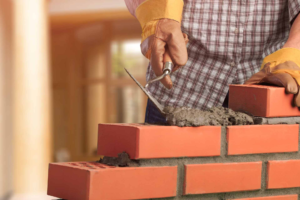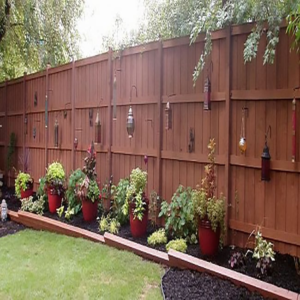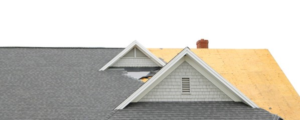Renovating your bathroom is a great way to add value to your home while updating your style. But this renovation requires careful planning.

A complete remodel often includes layout changes, wiring alterations, and replacement of fixtures and appliances. This level of work requires a licensed contractor.
One of the most critical first steps in any bathroom remodeling project is establishing a layout plan. This involves balancing functionality with your aesthetic goals.
A popular layout is a toilet room with the sinks and shower lined up next to each other. This is efficient for small spaces and can help reduce construction costs since plumbing fixtures aren’t on every wall. But, it can be a challenge to navigate into and out of when multiple people are using the bathroom.
Another option is to have the toilet and vanity share a common wall, like in this space from Mid City Interior Design. This allows for more counter space but makes it difficult to open the door to get into the bathroom.
If you’re relocating the toilet, be sure to consult with a plumber to ensure proper placement and configuration of water lines and drains. They can also offer insight into how the new layout will affect the cost of rerouting plumbing and electrical. Whether you’re planning on moving walls or not, consider keeping load-bearing walls intact whenever possible to avoid costly structural changes. This will help keep your renovation budget-friendly and allow for a smooth installation.
Plumbing
One of the most labor-intensive parts of bathroom remodeling is plumbing. A licensed plumber can run new lines for the sink, toilet, bathtub and shower. This includes disconnecting the existing fixtures, removing the toilet flange and running new pipes from the studs to the bathtub or shower. This is also a good time to consider putting in new lighting. A recessed light above the mirror is a popular choice, as is a chandelier in a large master bath.
The next step in bathroom remodeling is painting the walls. Choose interior paint with a semi-gloss or satin finish to stand up to humidity and moisture. It’s a good idea to finish the paint job before installing the vanity, sink, tub and toilet to avoid paint splattering on these new features.
If you’re considering major layout changes, such as moving the location of the tub/shower or toilet, or changing out the entire fixture suite, this is a remodel project rather than a makeover. This level of work often requires a permit to change the footprint of the room, as well as alterations to the plumbing and electrical wiring. It’s generally best to have a plumber and electrician involved at this stage to avoid unexpected complications down the line.
Electrical
In addition to changing the floor, a remodeling project is also the perfect opportunity to change out the lights. LED lights are an excellent choice because they use a third of the wattage of traditional bulbs, and they also save on energy costs. They also do not contain mercury, which means that you can recycle them.
Another upgrade that can add a touch of luxury to any bathroom is a radiant floor heating system. This type of heating warms up the floor, which is especially nice in the winter. It can even make the room feel cozy and inviting.
If you want to include more electrical appliances and upgrades in your renovation, a professional electrician can help. He or she will be able to explain the power capacity of your home’s circuits, and will ensure that the remodel does not overload your circuits.
You may also want to consider including GFCIs, or ground fault circuit interrupters. These safety devices are designed to automatically turn off the electricity if it comes in contact with water or moisture, which could otherwise cause electrocution. It’s also a good idea to install plug covers on your electrical sockets. This will prevent people from reaching into the sockets with wet hands, which can lead to serious injuries.
Flooring
Unless you plan to replace your tub and shower, most of the cost of your bathroom remodel will go toward flooring and accessories. Unlike most rooms in the home, bathrooms need durable materials that can stand up to water and moisture.
Ceramic tile, porcelain and stone tile are great options for bathrooms because they are water-resistant, come in a wide variety of color options and patterns, and can be cut to fit around your tub or shower. Cork is another durable option for your bathroom floor; it is made from the bark of a cork oak, and careful harvesting ensures that trees regenerate quickly. It also is nonslip, feels warm underfoot and resists bacterial growth.
Linoleum, which had something of a comeback in the 2000s, is another eco-friendly, water-resistant flooring choice. It’s made from linseed oil, plant fibers and resins, and has antibacterial properties.
Laminate flooring, which is a good DIY option because of its click-together system, is also available in waterproof versions and comes in hundreds of style options from pale gray weathered boards to rich dark oaks. Solid hardwood is not a great flooring choice for a bathroom because it offers no protection from moisture; even engineered wood flooring requires proper installation and finishing techniques to protect the substrate against water damage.
Cabinetry
Cabinetry is one of the most noticeable components of a bathroom. It’s also the most expensive element, but with the right design, it can elevate the overall look of the room.
A good starting point is to choose a vanity cabinet that matches the style of your space. For a traditional bathroom, shaker cabinets with classic white finishes pair well. For a transitional or contemporary space, opt for sleek, flat-panel doors in wood or painted finishes. For a modern farmhouse or coastal bathroom, a farmhouse-style vanity with wooden legs or splayed feet packs the right amount of panache.
The next step is to select the countertops and sink. Countertops are available in a wide range of materials and styles, from natural stone to quartz engineered slab. Depending on the size of your bathroom, you may also consider adding a vanity top shelf for additional storage.
Once the cabinets and countertops are in place, it’s time to install the sink, faucets, showerhead and other plumbing fixtures. This is usually the biggest sub-project within a bathroom remodel, but contractors can handle the process much more efficiently than a DIYer and make sure everything is up to code.
Lighting
The right light fixtures will create a warm, inviting space that’s easy to relax in. Lighting options include wall sconces, ceiling fixtures with diffused shades and even chandeliers to make a statement. Vanity lights with multiple bulbs on a bar mount are also available and can be aimed to illuminate different areas of the room as desired.
Depending on the size of the bathroom, lighter-colored paints and fixtures will help it appear larger, while darker tones can add drama or warmth. When selecting light fixtures, pay special attention to the moisture rating, as all fixtures installed in bathrooms should be rated for wet conditions.
A good quality light bulb will have a rating on the package that indicates the color temperature (in kelvins) and the color accuracy, or CRI. A high CRI means that the fixture produces a natural range of colors and doesn’t have a bluish tint.
While some homeowners want to make a bold style statement in their bathroom, others are looking for a more timeless design that increases resale value and fits in with the other homes in their neighborhood. Whichever you choose, working with a remodeling professional can ensure that your project is a success.
Accessories
Bathroom accessories are used to add functionality and comfort to the space. They can be small items like soap dispensers, toothbrush holders, or shower caddies or larger items such as towel racks and bath mats. Some are decorative, allowing them to complement the decor and add a splash of style. Others are functional, such as storage jars or toilet paper holders that make it easy to keep the area clean and organized.
The selection of accessories is extensive and suited to every aesthetic. Some are available in a wide range of finishes so they can blend seamlessly with existing fixtures while others are designed to be a focal point and create a wow factor.
It’s important to consider who will use the bathroom when choosing accessories as this can help determine what items are most needed. For example, if children will be using it frequently then it might be wise to include a tub as well as plenty of storage for bath toys. On the other hand, if only adults will be using it then a simple pedestal sink and a vanity might be sufficient.
If you’re a techie, look for options that offer the latest in smart home technology like waterproof televisions and built-in hi-fi systems. There are also a variety of eco-friendly upgrades to help you save energy and water while still being comfortable.











